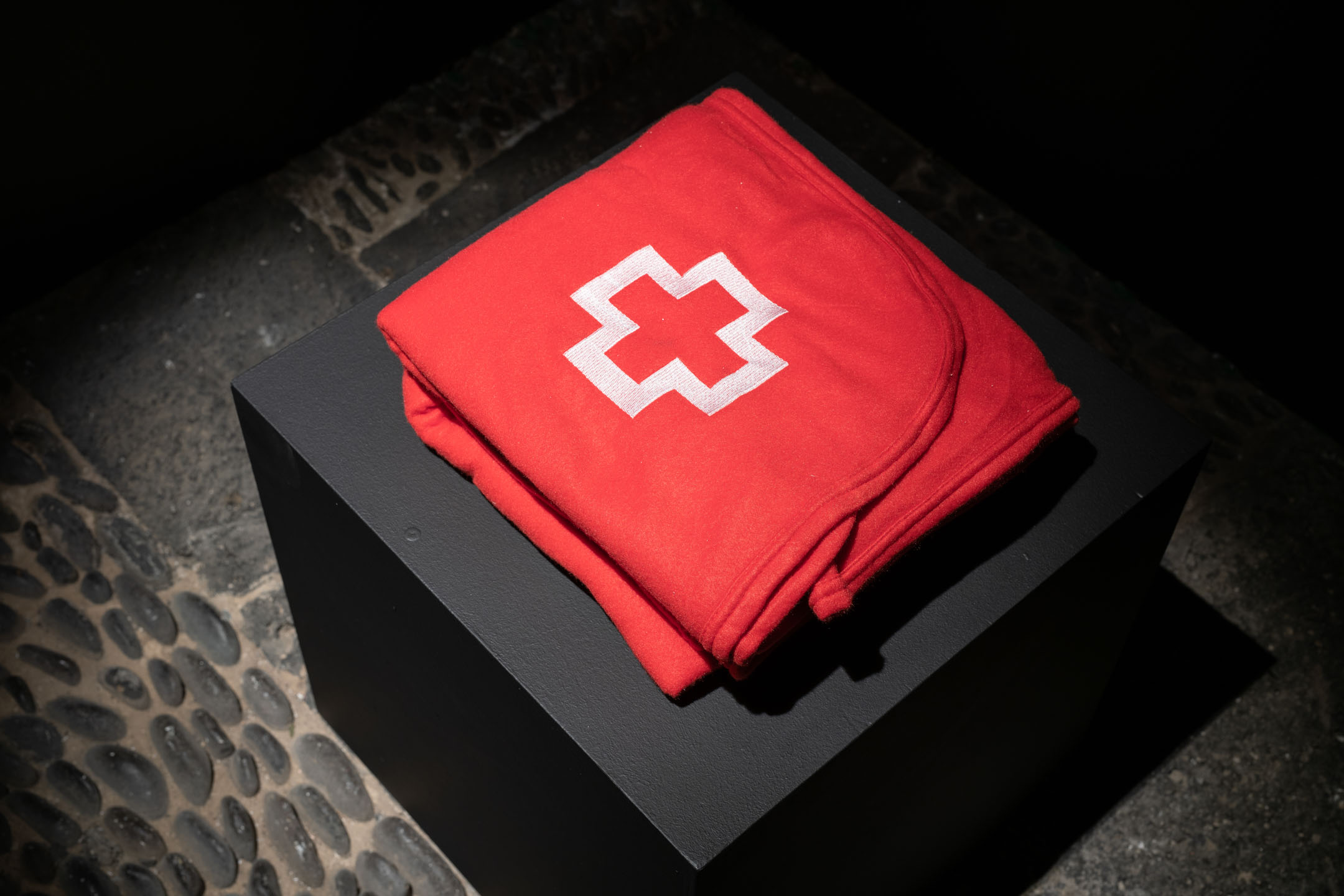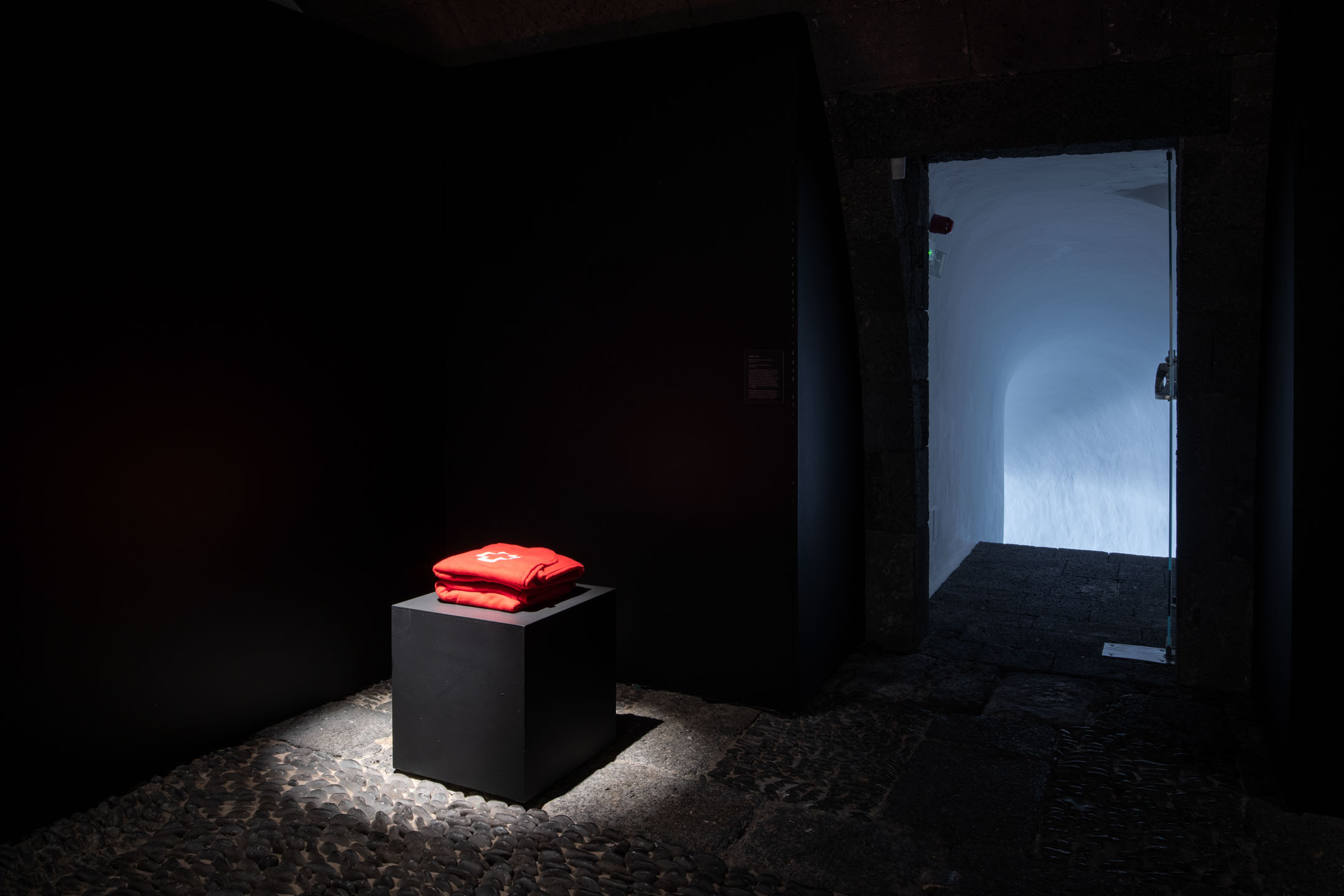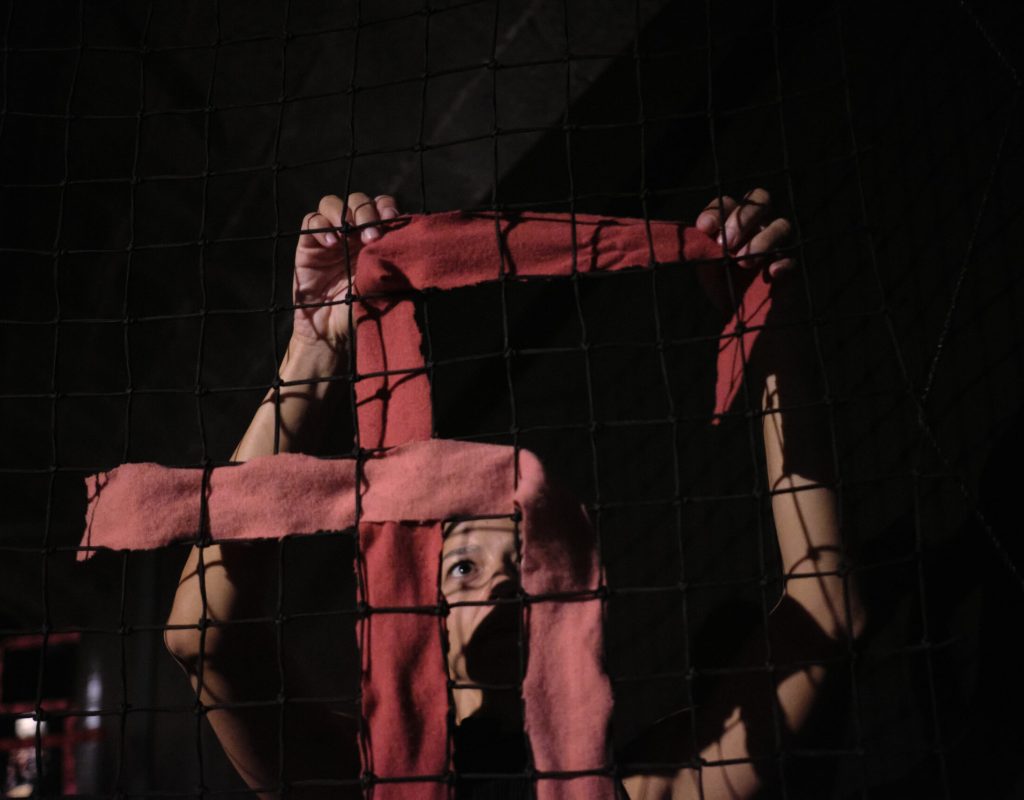
Los ojos bajo la sombra
Curator
Credits
DETALLES DEL PROYECTO
In Los ojos bajo sombra (The Eyes Under the Shadow), it arises from the production of the grana cochineal and its historical relationship with the Canary Islands. The title comes from a text from the beginning of the 20th century that narrates the work of Canarian women workers in the fields and the value of this raw material at the time. The cochineal is an insect domesticated in Mexico and other places in America that parasitizes on nopales. The adult females reproduce in the nopal leaves, which are subsequently extracted, dried and crushed to obtain the red pigment. Called in the Nahuatl language nocheztli (blood of tunas), the dye is used to stain different materials such as ceramics, and especially textiles and paints.
The obtaining of the cochineal is carried out mainly by women, who build a relationship of care and protection with the parasite. Insect females cared for by human females and cultivated in a cycle of production and reproduction. Thus, the pigment comes from the living, from its relationship with other species and with the violence of its grinding. As in other pieces such as Camuflaje or Molienda, Candiani addresses the notion of the collective work of women and the working conditions that they establish in what she calls the “choreographies of labor”. The female presence and her workforce as a productive tool are essential to understand the manufacture and preparation of the pigment.
The scarlet cochineal was imported from America as early as the 15th century and was an important source of income for the Spanish crown, along with silver and gold, which earned it the nickname “red gold”. The colony’s exploitation routes intensified in the following centuries, fostering commercial import routes to Europe and abundant migration flows. In the 19th century, grana was widely introduced to the Canary Islands, as the island’s climate favored the planting of nopales. Faced with the crisis of sugar and vine crops on the islands, the production of grana represented an opportunity for the rise of the textile industry in Europe and the subsequent fascination with dyes.
The literal presence of the pigment in this piece evokes commercial exchange since colonial times and the dispossession of the territory. The red-tinted abstract maps point out the violence of those colonial borders and the political force represented by the rescue of this raw material. As a new way of inhabiting cartography and history, the fabrics become scars of a camouflaged story that emerges proposing new textures and readings of the place.
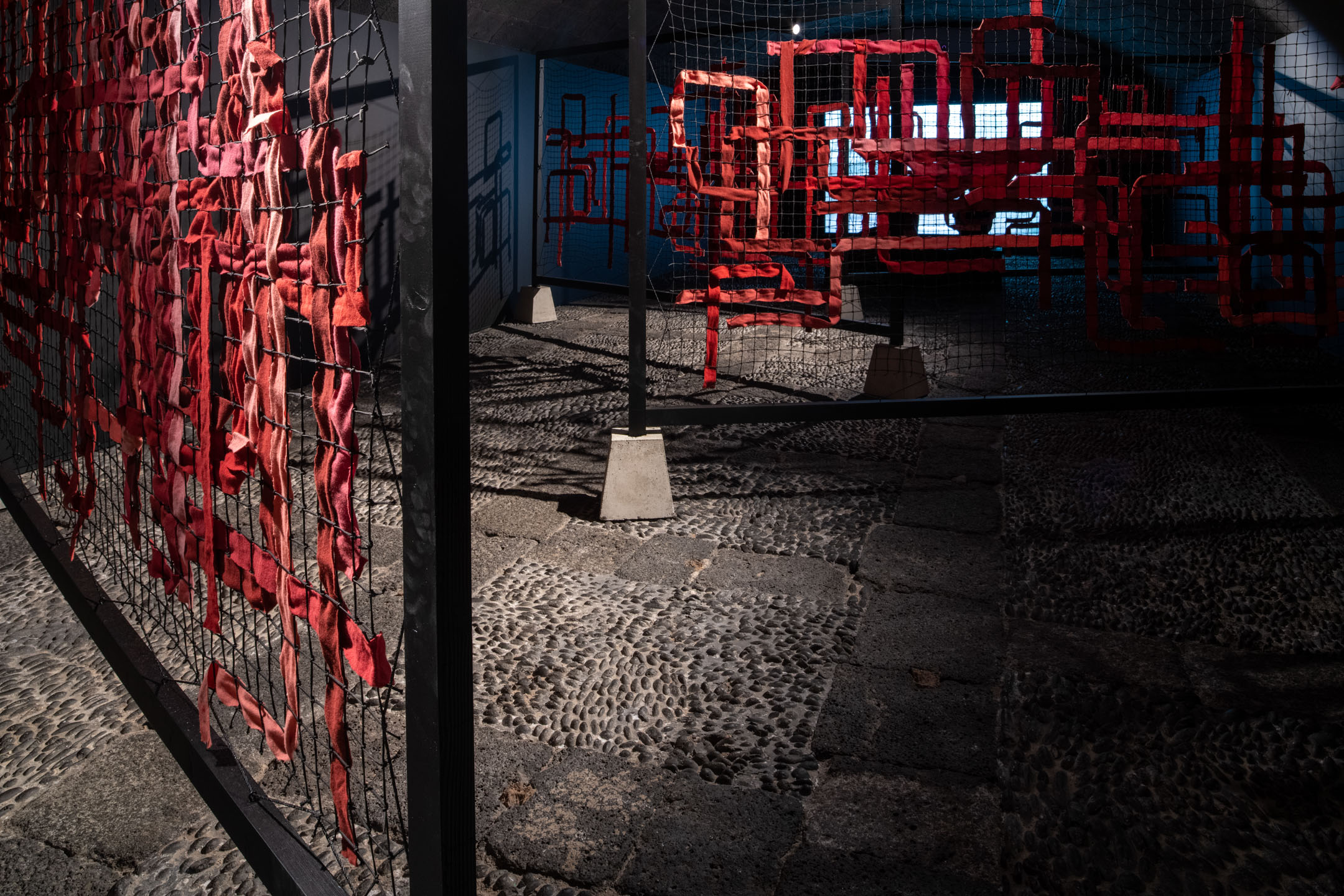
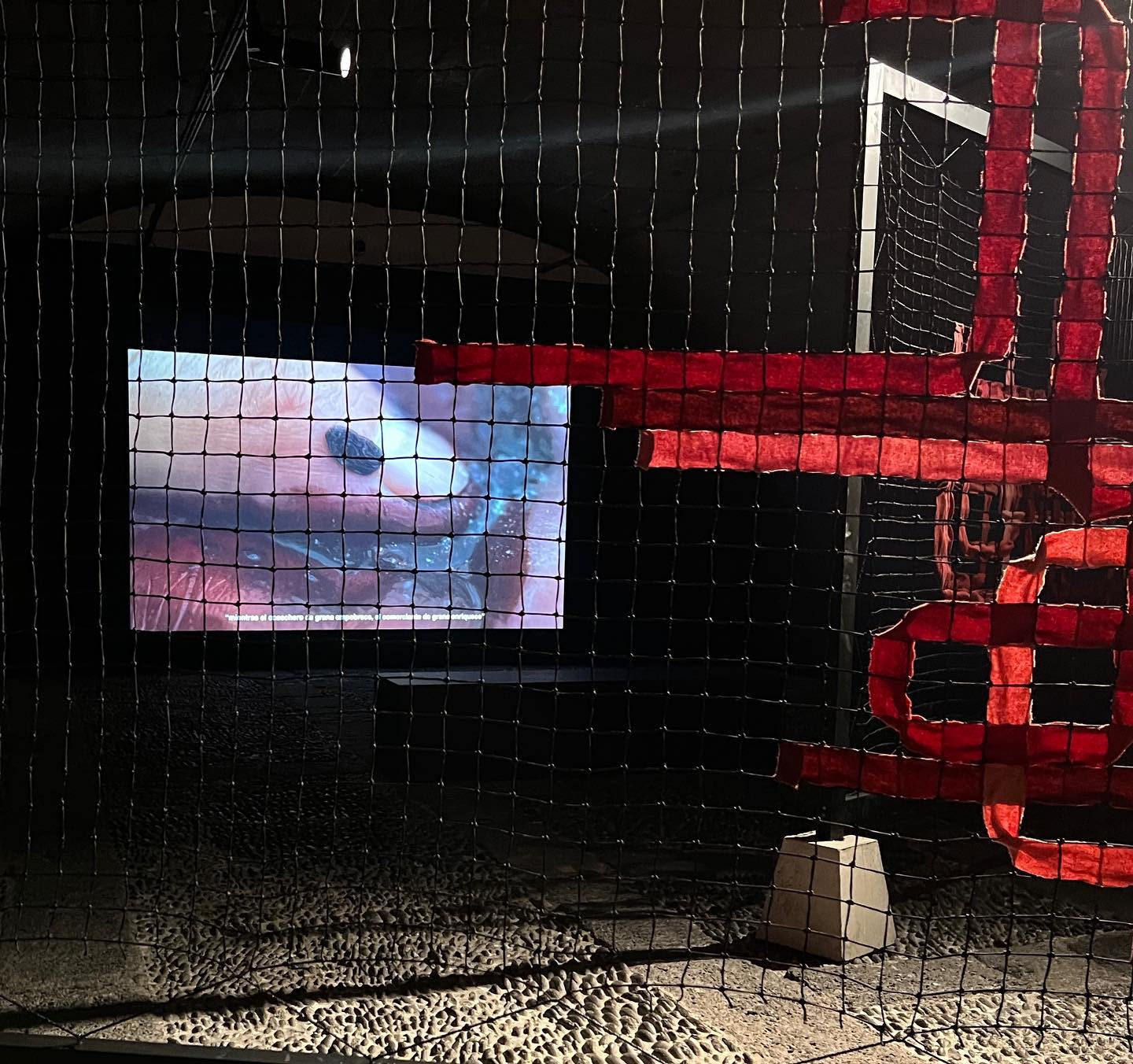
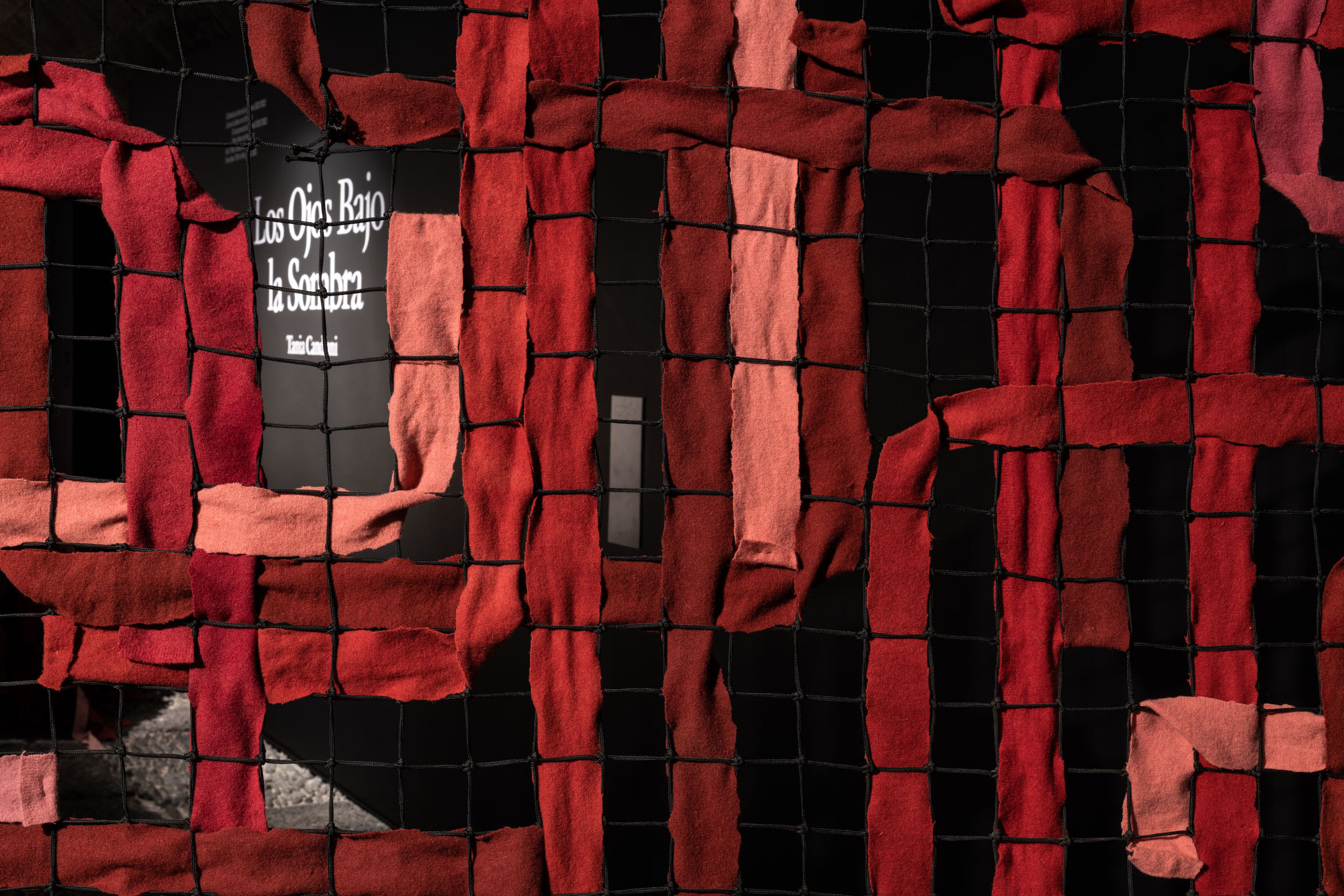
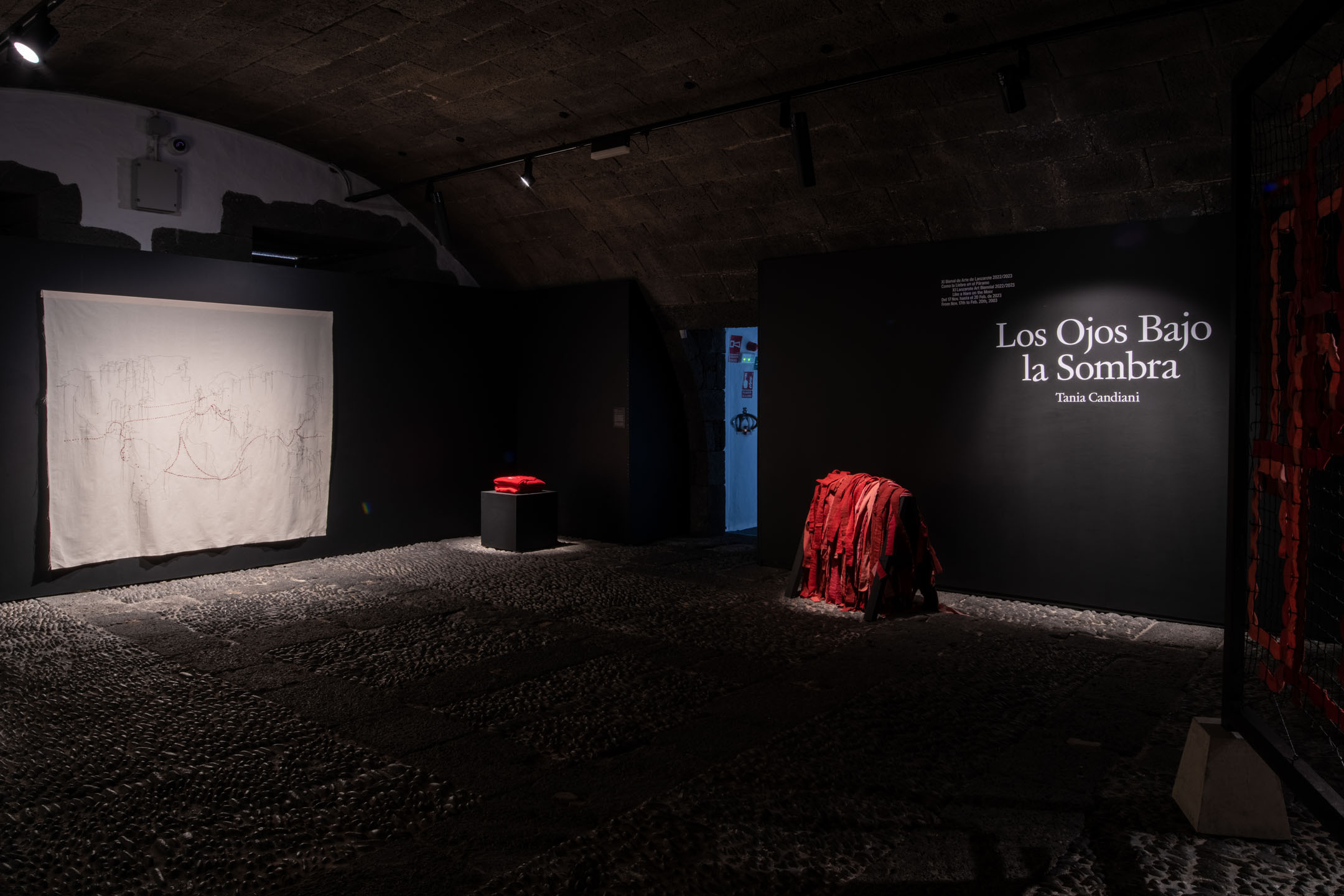
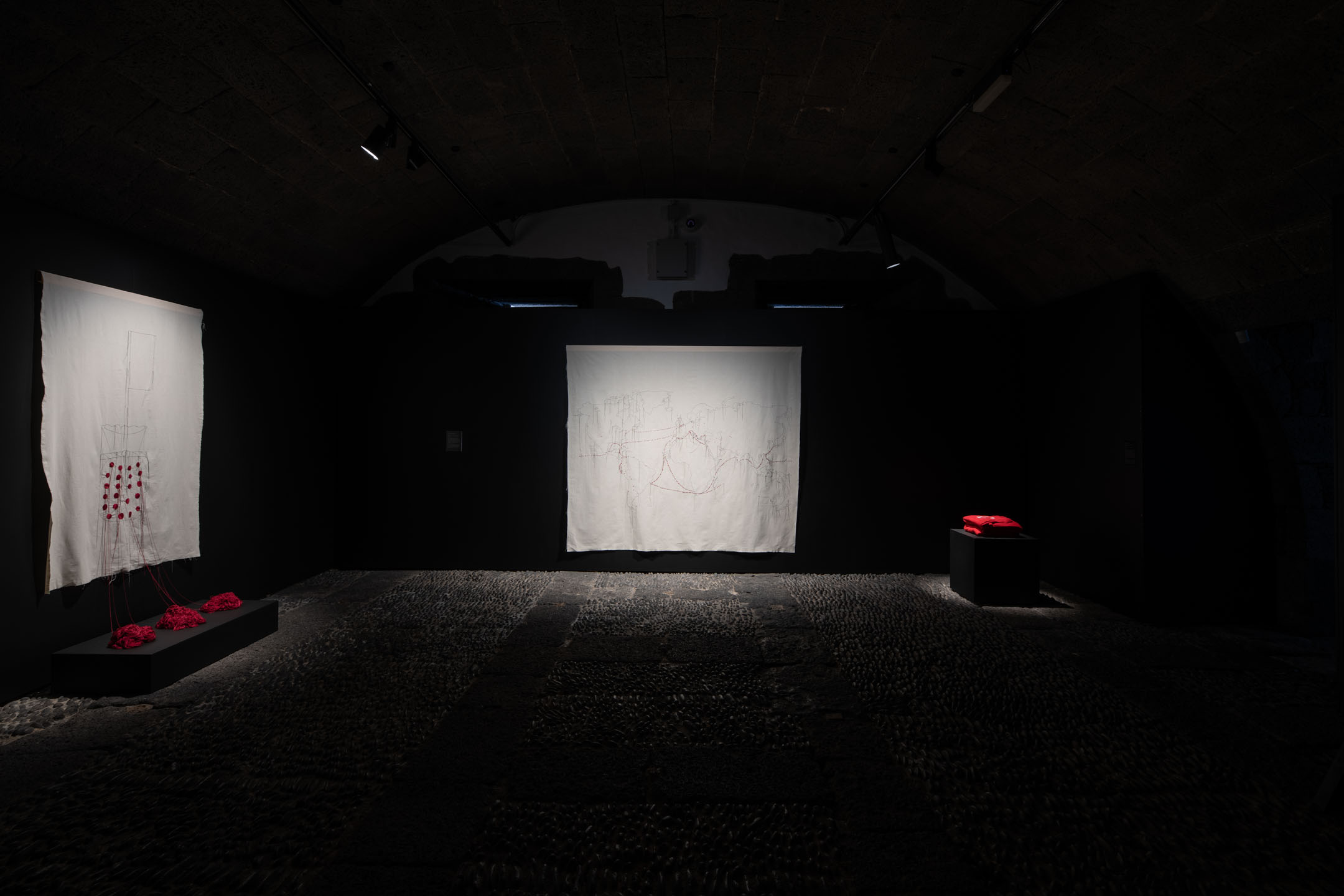
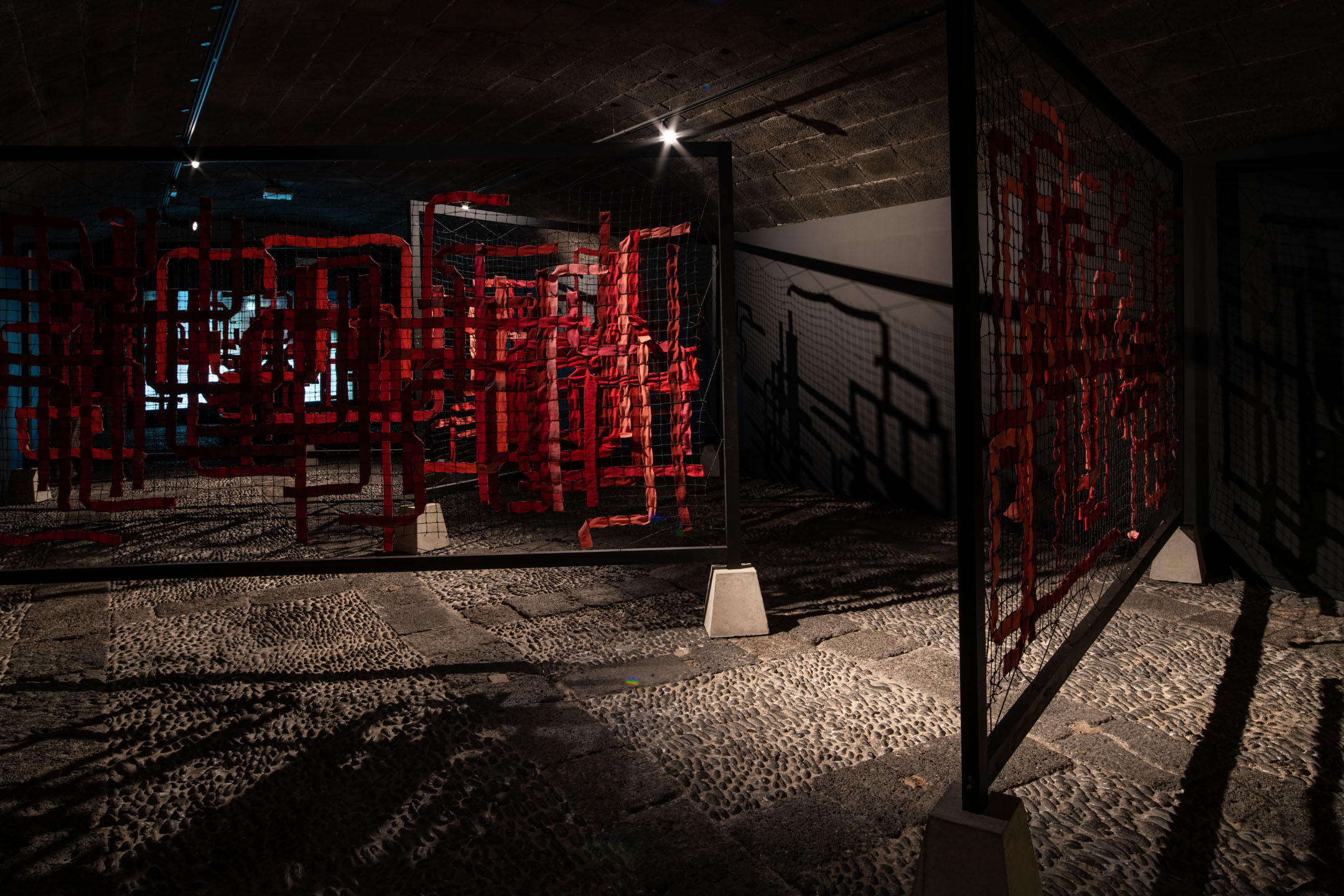
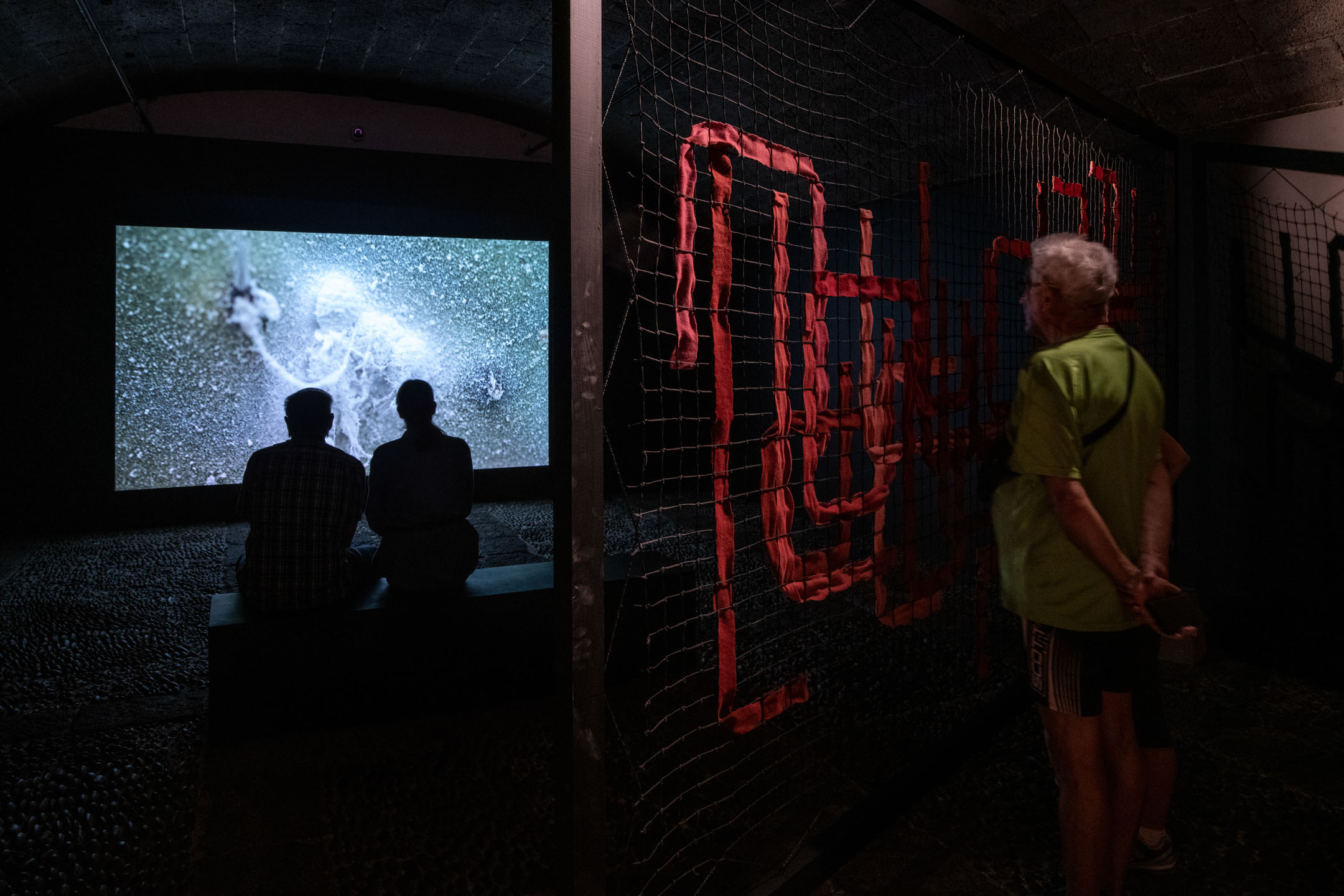
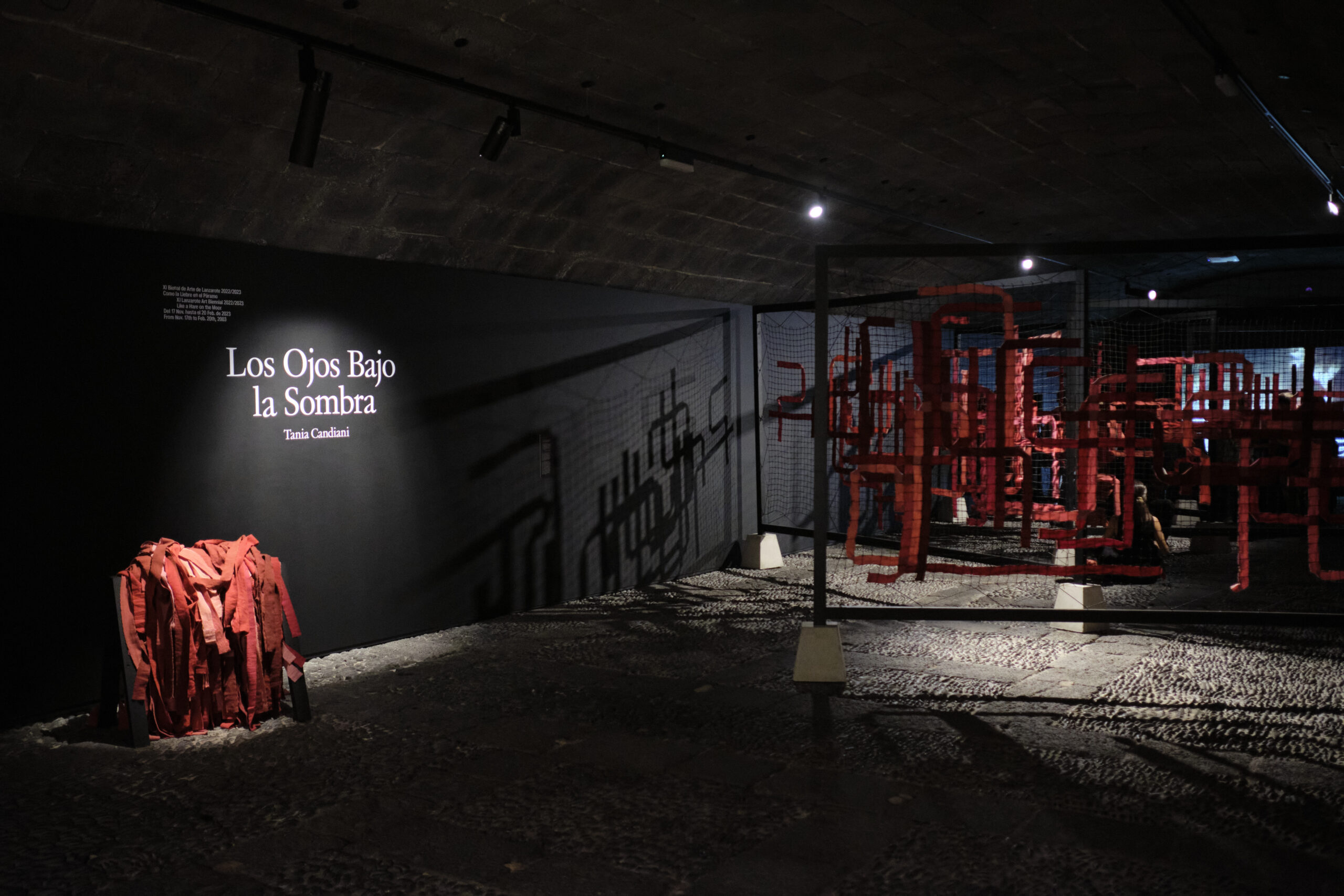
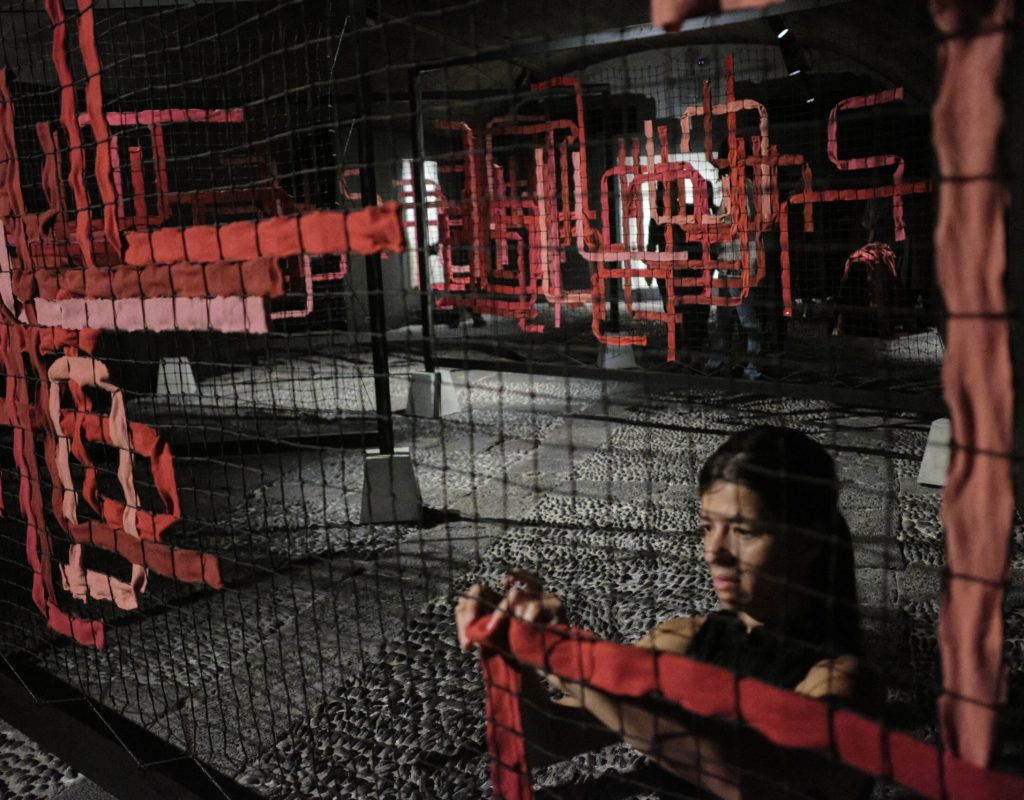
Performance, action on site
Data sheet
Weavers
DETALLES DEL PROYECTO
They got back to work. The six big women, two old and the other four young, their hands well covered in rags, which simulated gloves, their faces covered in the Moorish style, leaving only their eyes visible under the shadow of the enormous palm hat, took the spoon , a kind of blackout, and they began, entwined among the nopales with their strong trunks and resistant leaves, tall and compact, to collect the cochineal.
Angel Guerra. A merced del viento (At the mercy of the wind) (1912).
This piece deals with the notion of collective work by women with a historical mention of the use of forced labor in the encomienda and repartimiento systems for the breeding of cochineal, as well as for the manufacture of dyes. The female presence and her workforce as a productive tool, often under the shadow, are essential to understand the manufacture and preparation of the precious pigment.
The piece also implies in itself a migration of knowledge and materials. Wool dyed in Mexico makes the same journey as centuries ago. The on-site action that takes place in this piece is the act of interweaving: interweaving cultures, knowledge, geographies in a territory that the viewer transits. The literal presence of the pigment in this piece evokes commercial exchange since colonial times and the dispossession of the territory. The abstract plot dyed in red indicates the violence of the borders and the political act that the rescue of this raw material represents. As a new way of inhabiting cartography and history, the fabrics become scars of a camouflaged story that emerges proposing new textures and readings of the place.
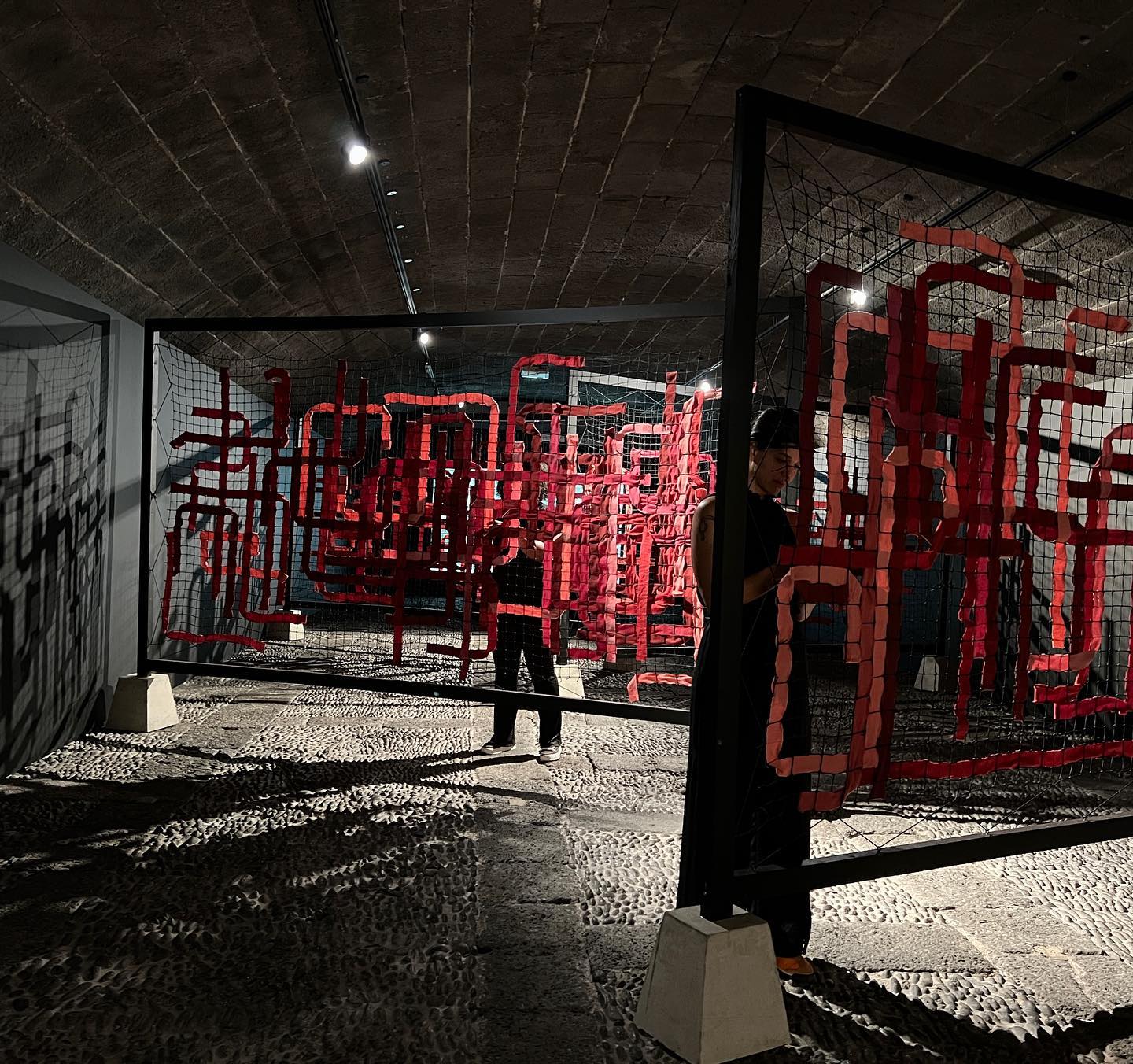
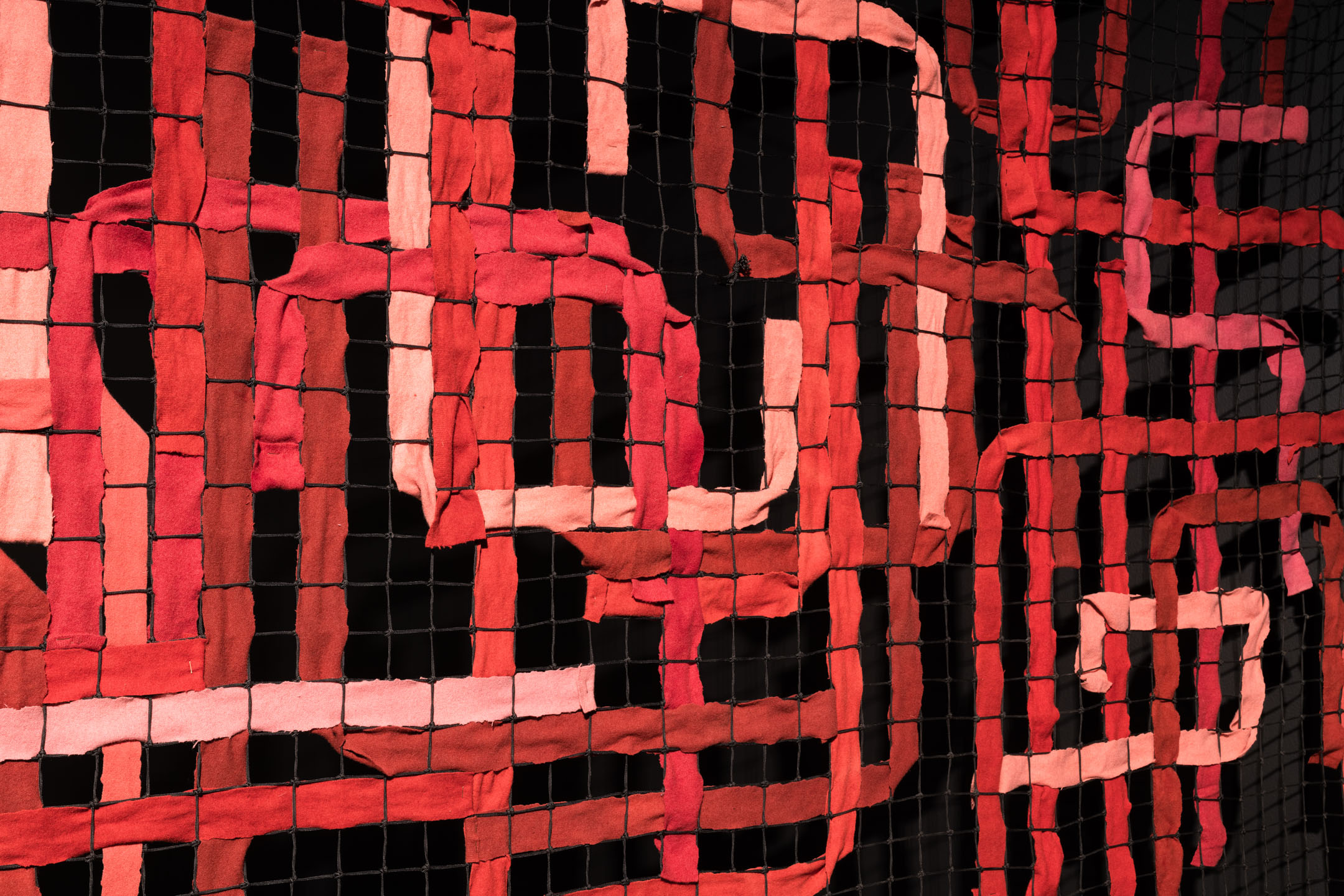
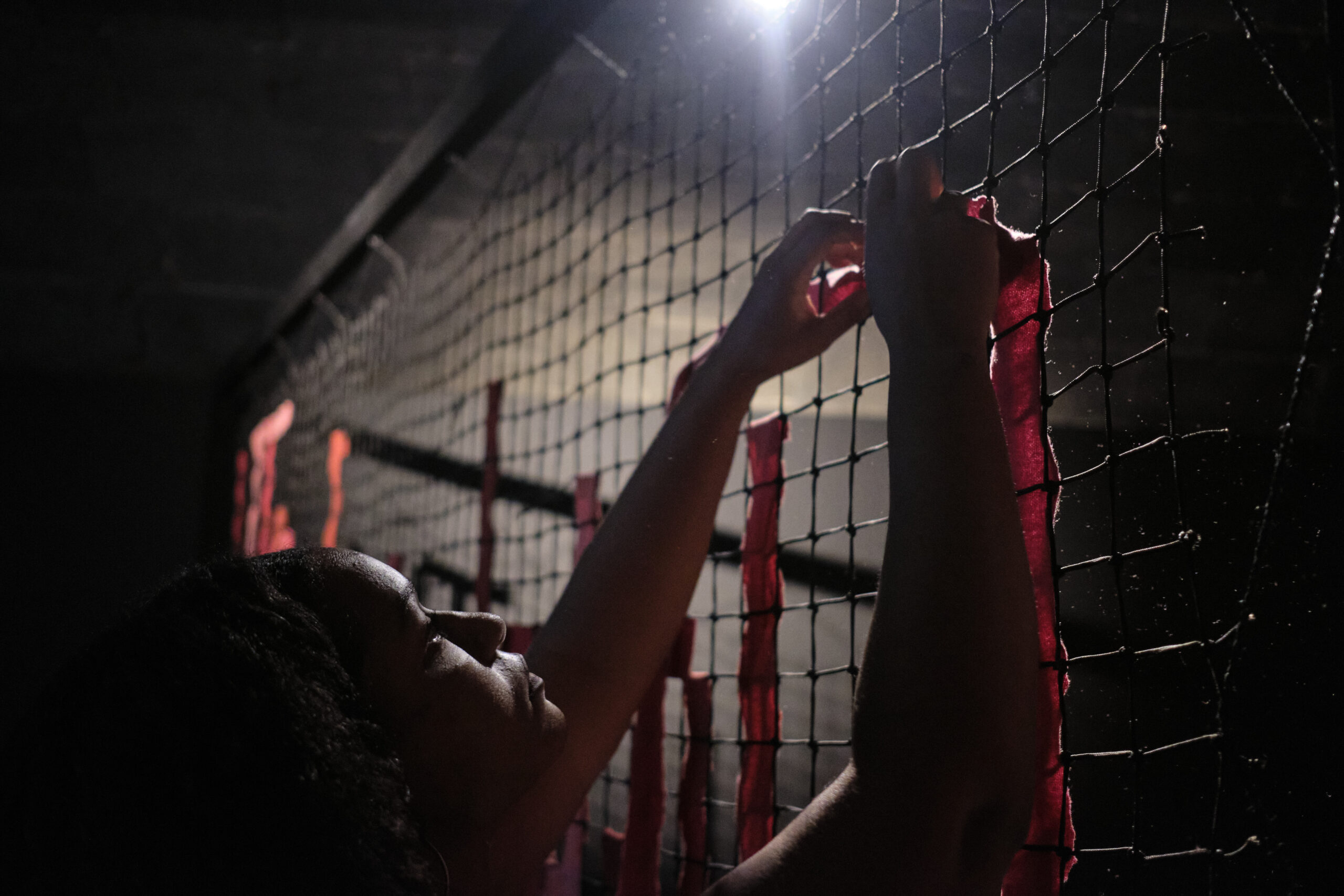
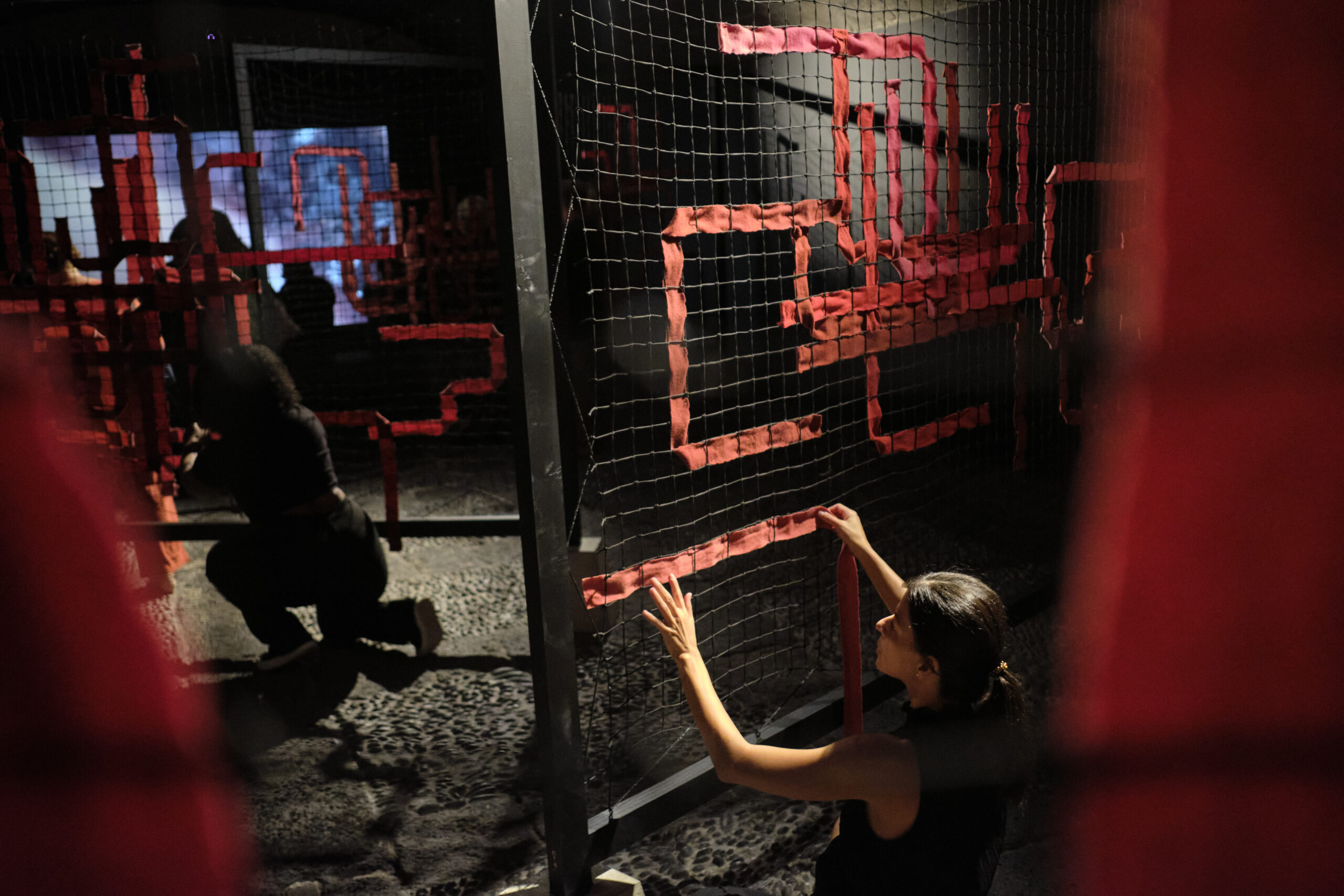

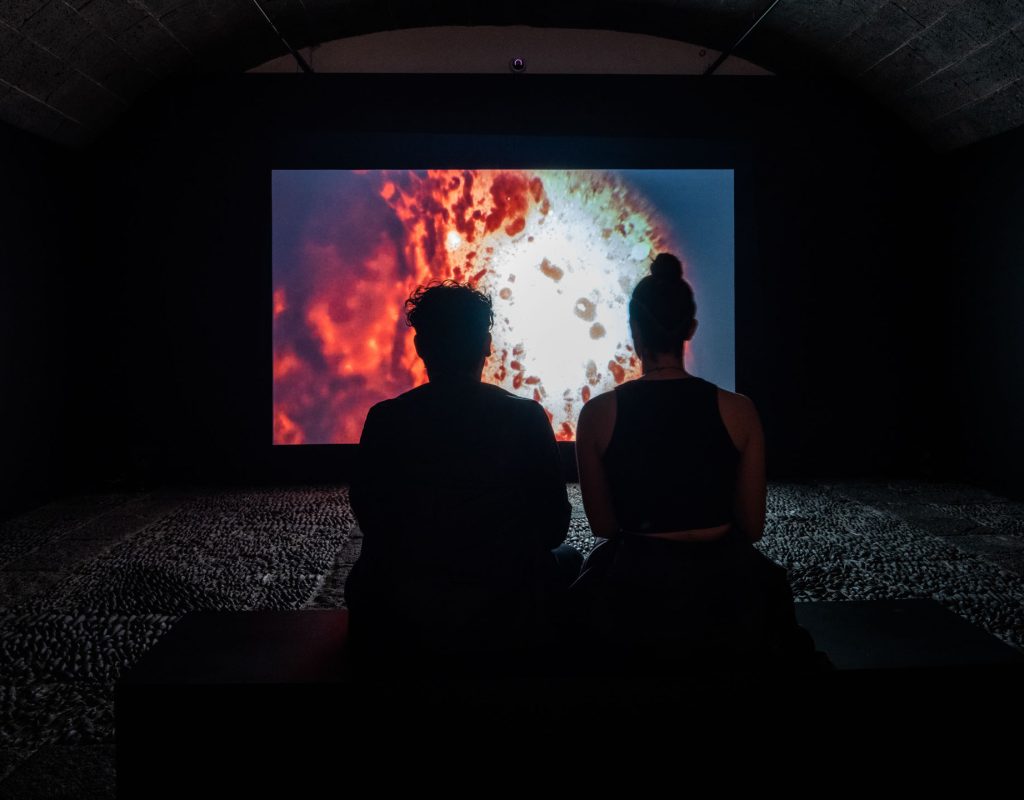
Campo carmín
Data sheet
Credits
DETALLES DEL PROYECTO
Campo carmín (Carmine Field), is a journey through the domestication process of the grana cochineal. It begins in the green sea of the Nopaltepec valley, in the state of Mexico, travels to the greenhouses of Tlaxcala, where it is cared for by hands with ancient knowledge, and ends in the very womb of the insect and its multiple births. It is a journey to the birth of color.
The infestation and harvest of the grana is an activity primarily carried out by women, which involves knowledge, affection and patience. This piece is a tribute to those hands that raise, care for and collect it, and also to that female of a different species, the grana, who gives birth and expels her young while hugging the leaves from which she feeds.
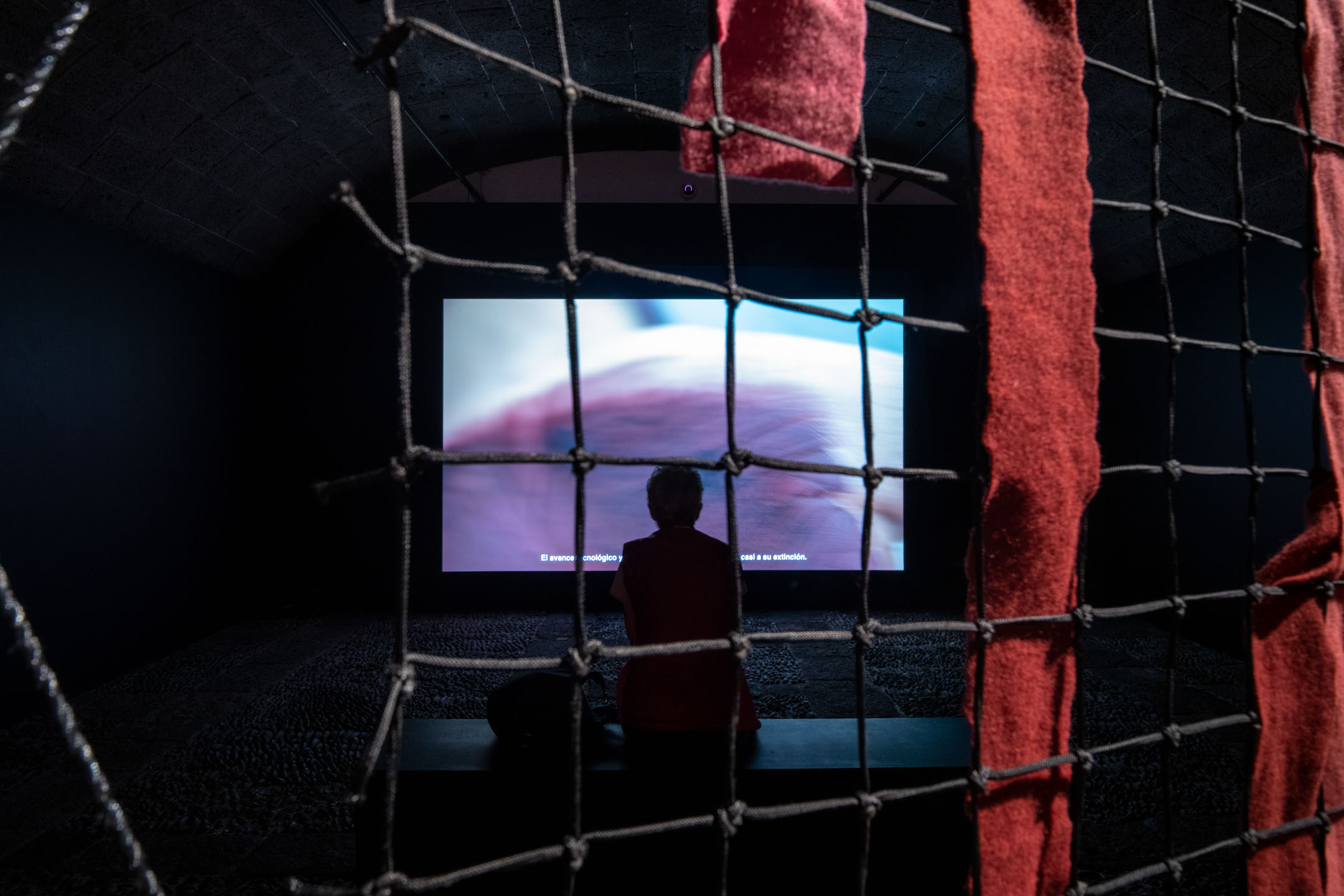
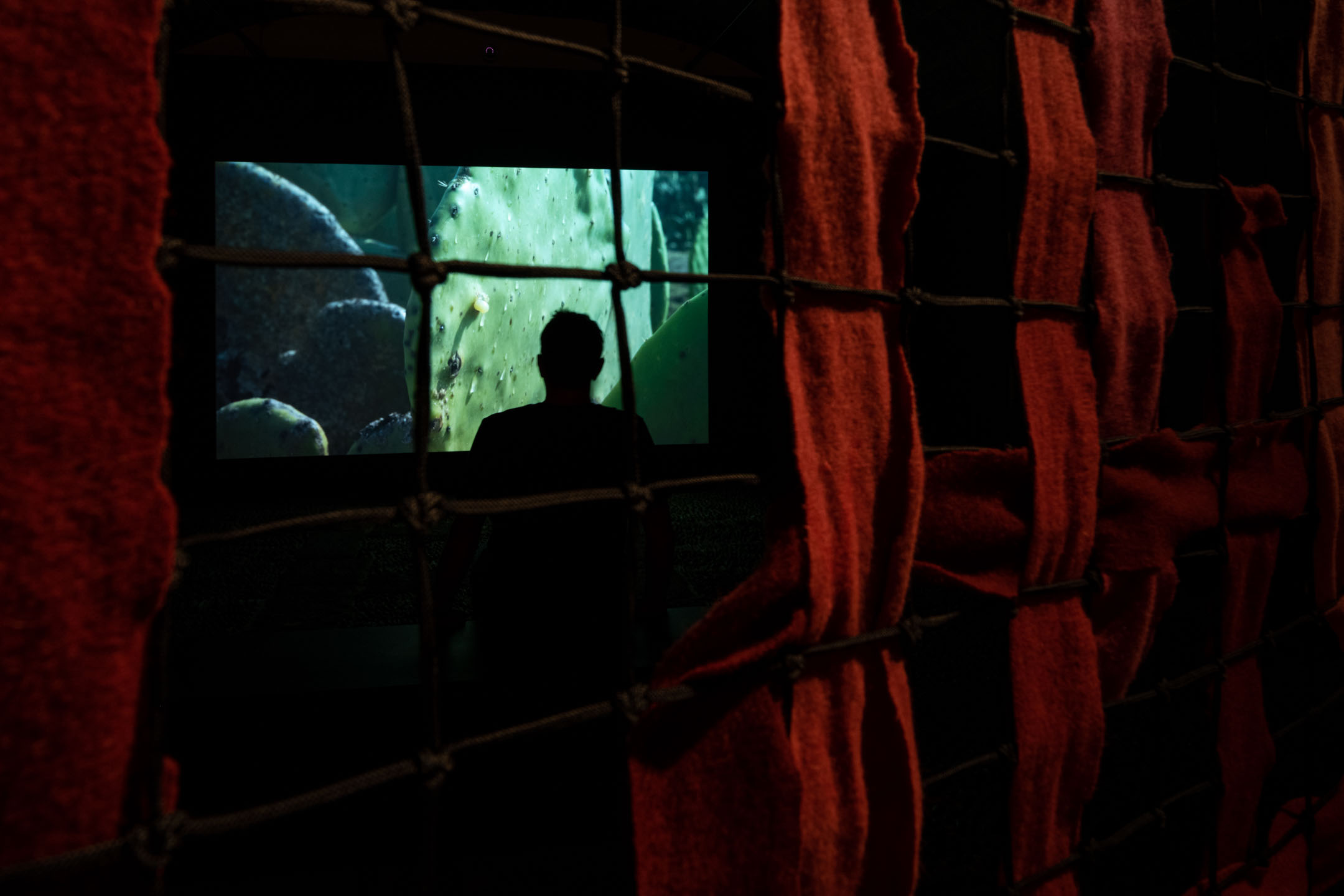
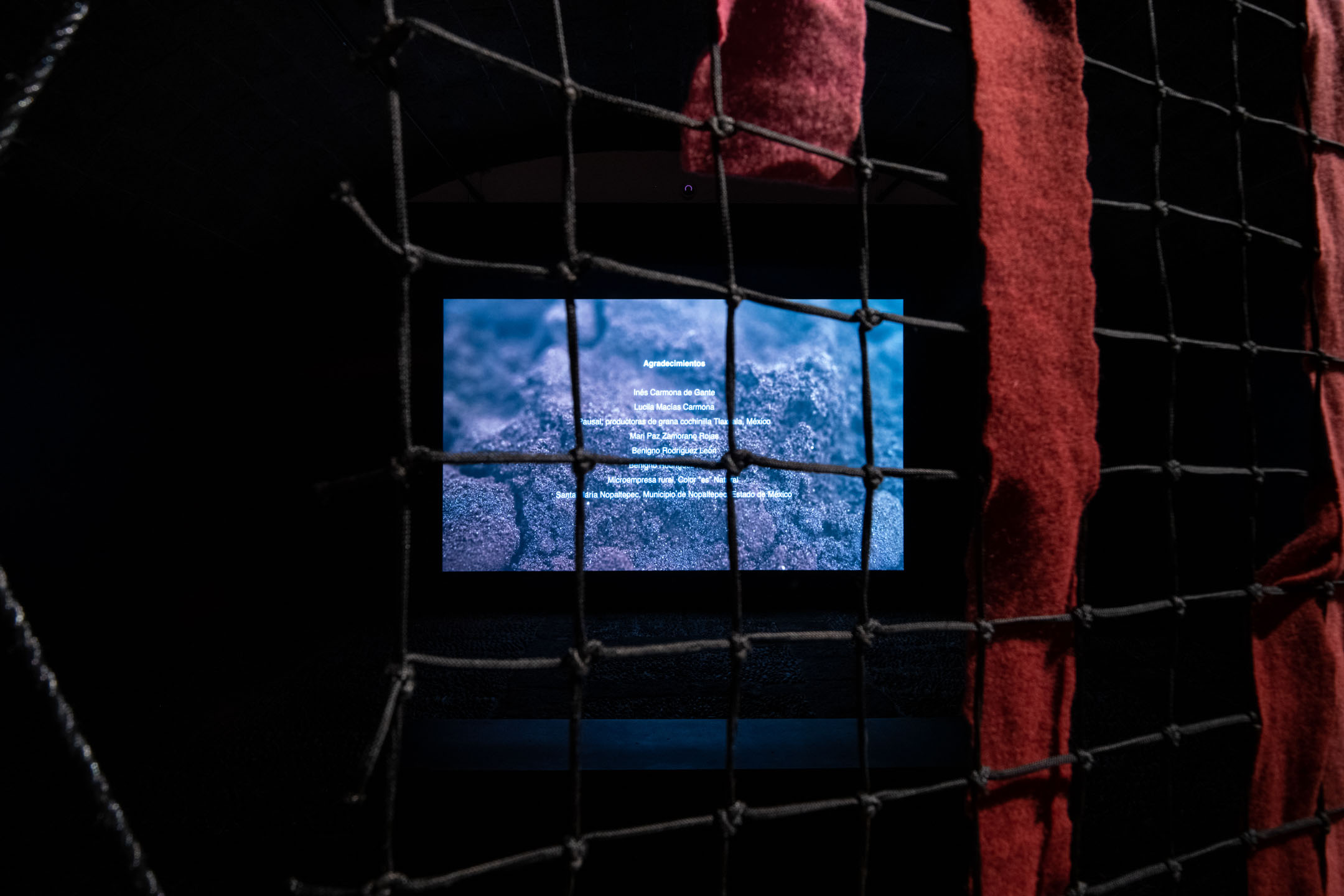
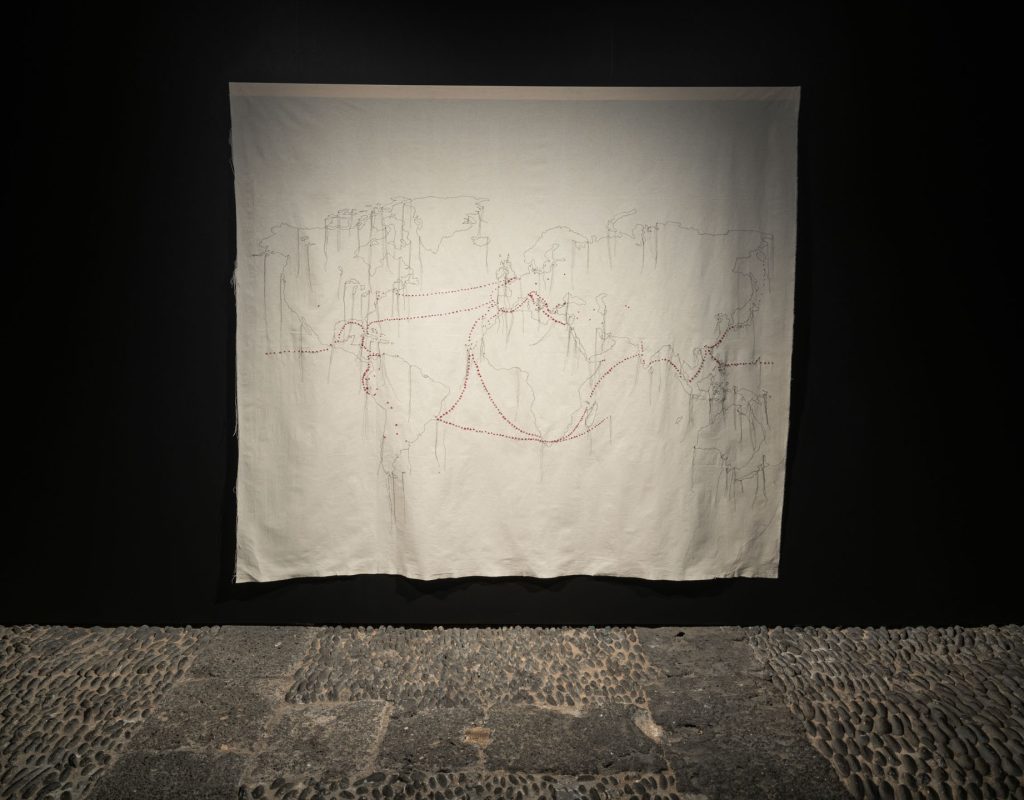
La ruta de la grana cochinilla
Data Sheet
DETALLES DEL PROYECTO
La ruta de la grana cochinilla (The route of the grana cochineal). Spanish fleets transported European agricultural and manufactured products to New Spain, bringing back silver and other colonial products such as cochineal. The cultivation of cochineal was promoted by the Spanish in the 15th century and extended to Guatemala. The pigment revolutionized the dye industries and was one of the most lucrative branches of the Ibero-American economy.
This stitched map reproduces the route of that trade from the 16th to the 19th century and allows the grana to once again inhabit the transit of historical exploitation derived from the conquest. Like a footprint, red is inserted and occupies that cartographic wound that signified the colony.
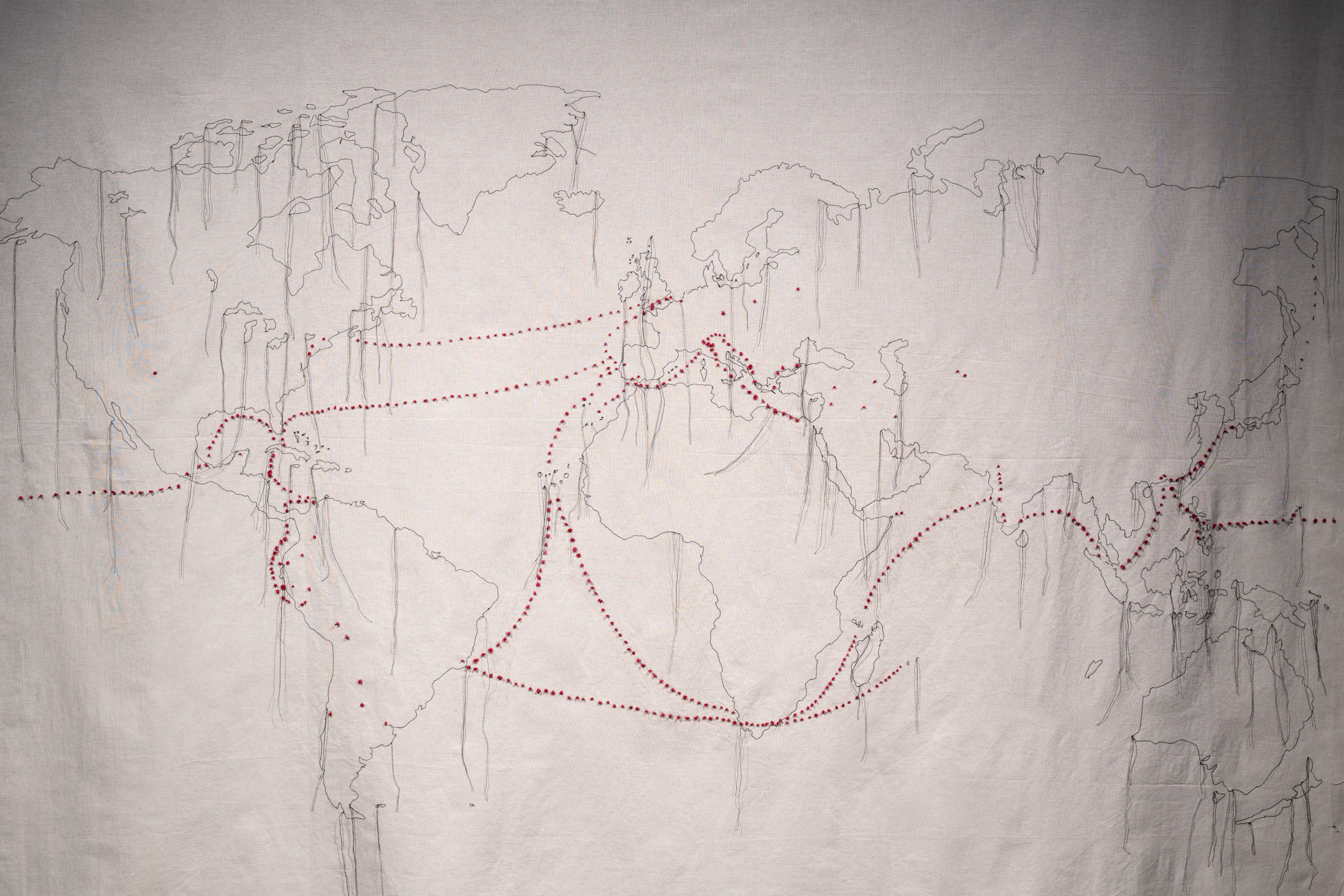

Centecpanxiquipilli Nocheztl
Data sheet
DETALLES DEL PROYECTO
The cochineal was used in mural painting, decorating gourds, dyeing textiles, painting codices or as a cosmetic. It was also subject to the tribute that the Aztecs demanded in their territories.
The Matrícula de los Tributos is one of the so-called Mexica codices, made between 1520 and 1530, probably copied from a Mexica original years after the conquest. Inspired by original codices copied by the tlacuilos (codic painters), it was painted by Mexica scribes, who used the ancient pictorial format and later added descriptions in Spanish. This codex, later annexed to the Mendocino codex, records the taxes made to the Mexica State and presents information on the territory and the socioeconomic structure of the society. Its leaves on amate paper show the tributary altépetl (political entities) subjected to the Mexica, as well as the products and amounts they paid.
Following the inherent sequence of reproduction and transmission of the codices, the embroideries of the piece transcribe and translate these tables of tributes into another materiality. The grana seam allows the pigment to speak as matter and texture and influence its own history of exploitation and valuation as an element of profit and benefit.
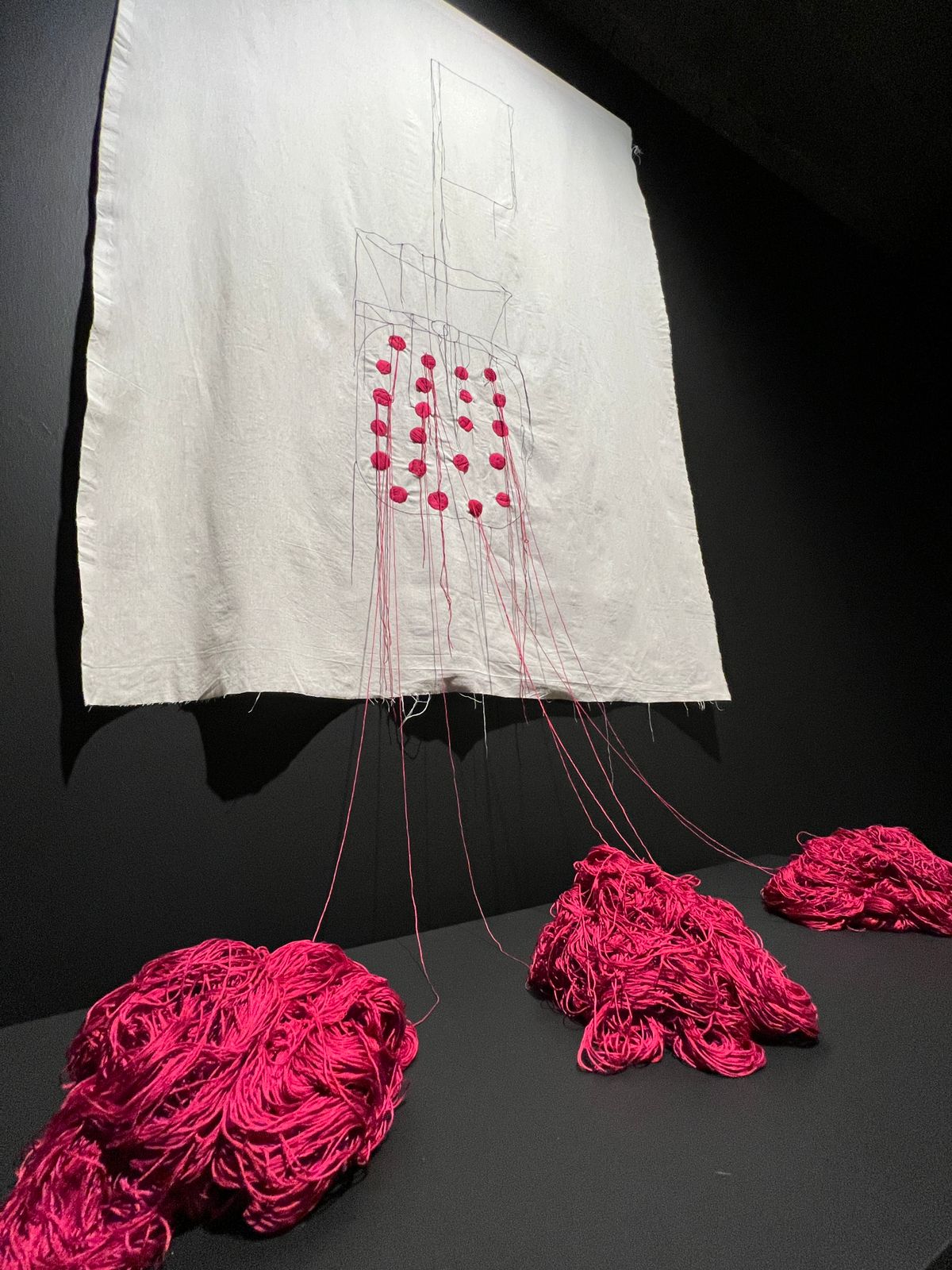
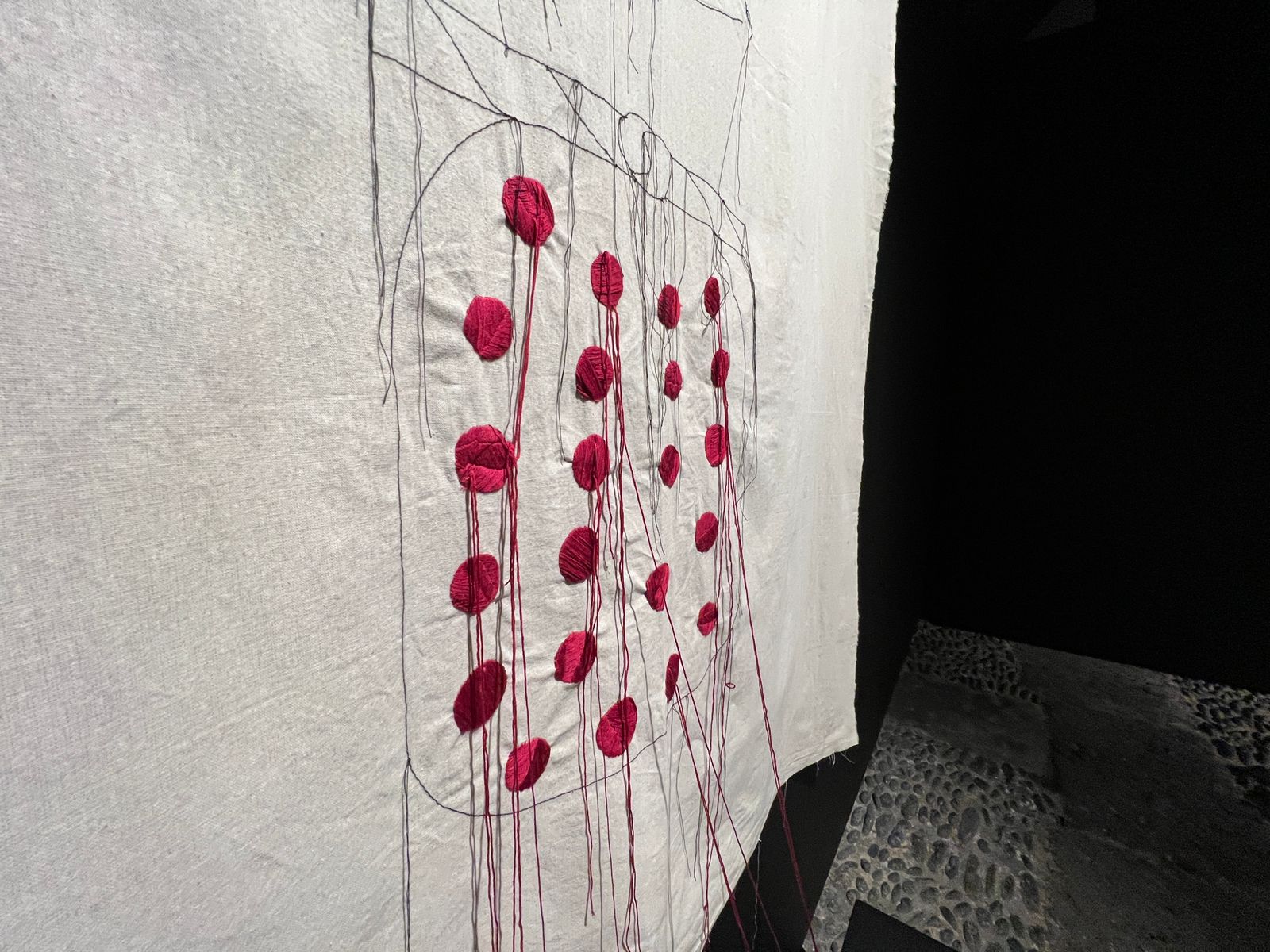
DETALLES DEL PROYECTO
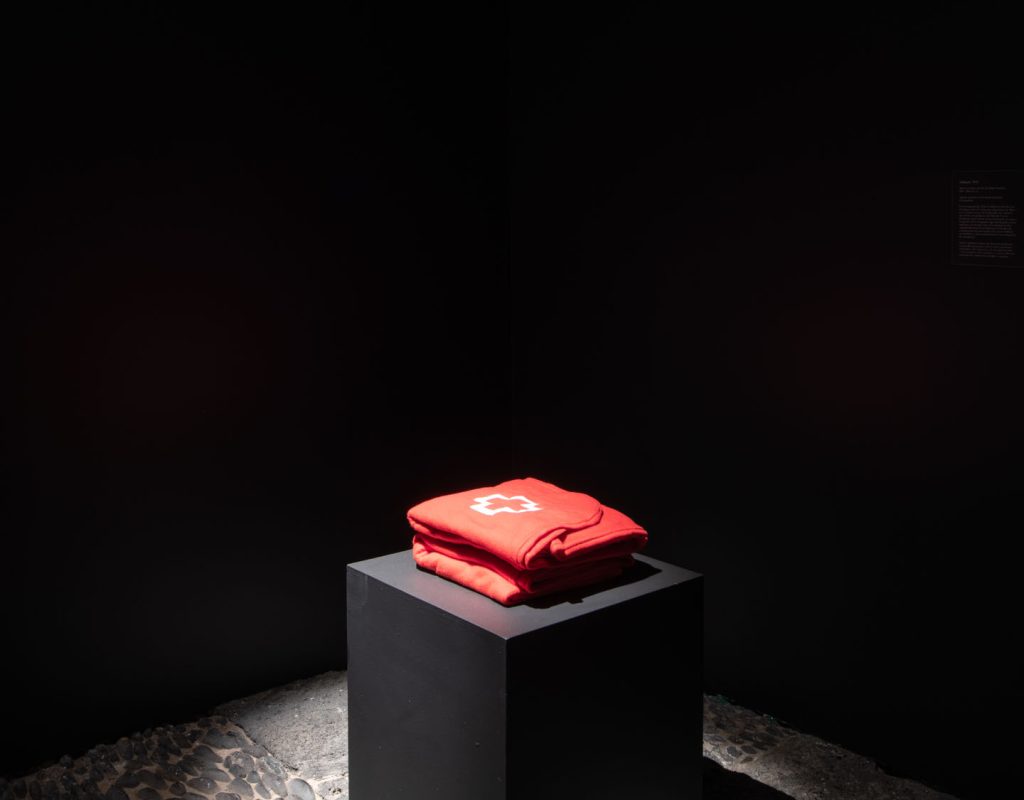
Naufragio
Data sheet
Thanks to
DETALLES DEL PROYECTO
Tania Candiani’s research was stained red when she inquired about the migratory relations between Africa and the Canary Islands through the so-called Atlantic route, one of the most dangerous in the world. In her searches, the typical photographs of migrants who have come ashore covered in red blankets insistently appeared. This iconic image reproduced over and over again by the media has caused a certain insensitivity in the public and a normalization of this emergency situation.
Tania Candiani recovers an easily recognizable element to put on the table issues related to violence, displacement and borders and, in this way, scrutinize the concepts of exploitation, injury or camouflage.
